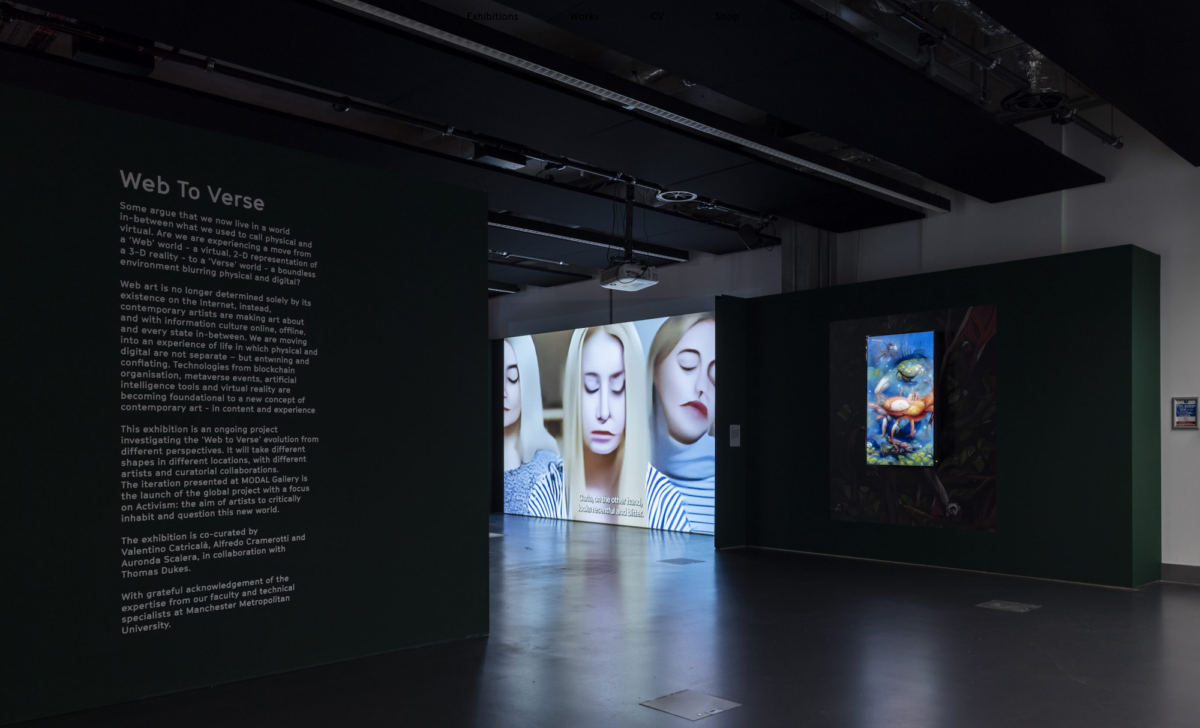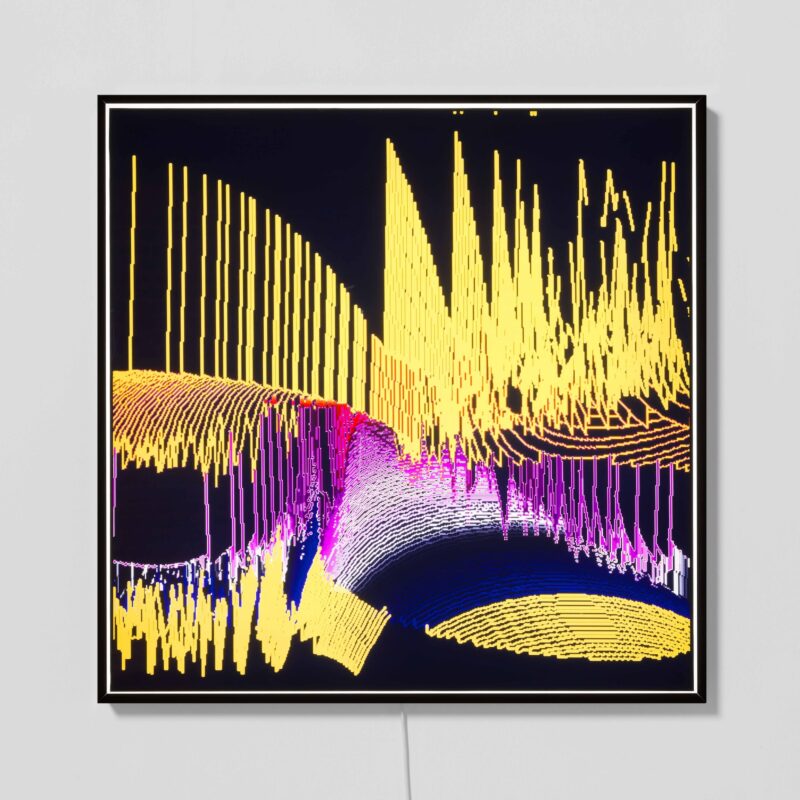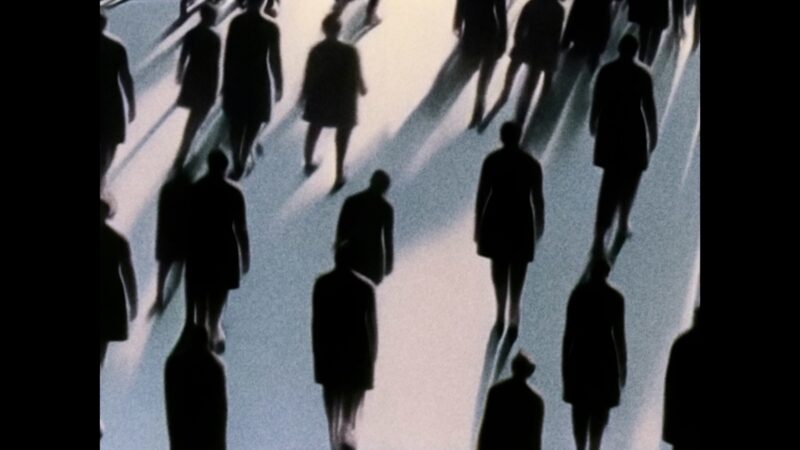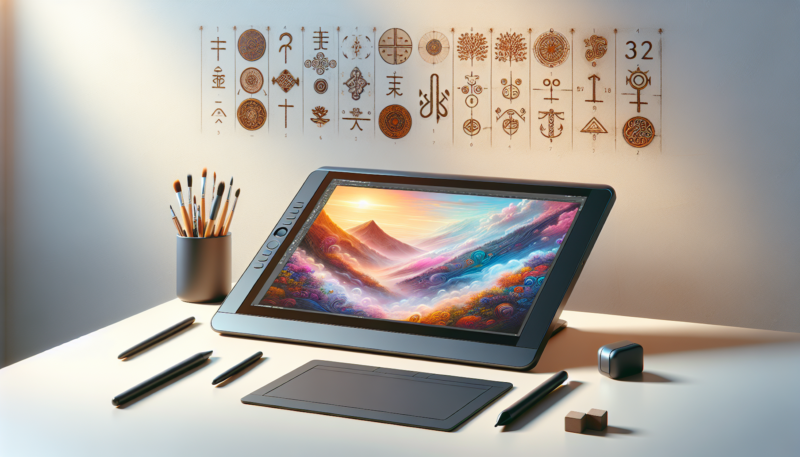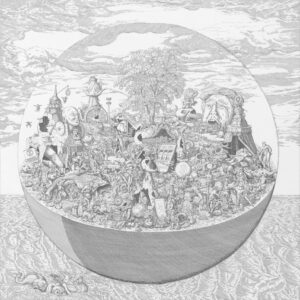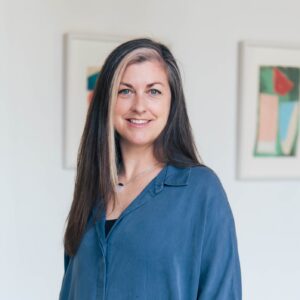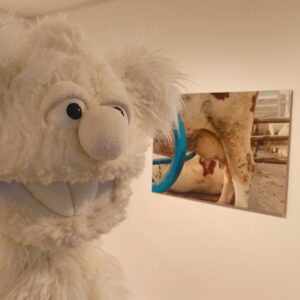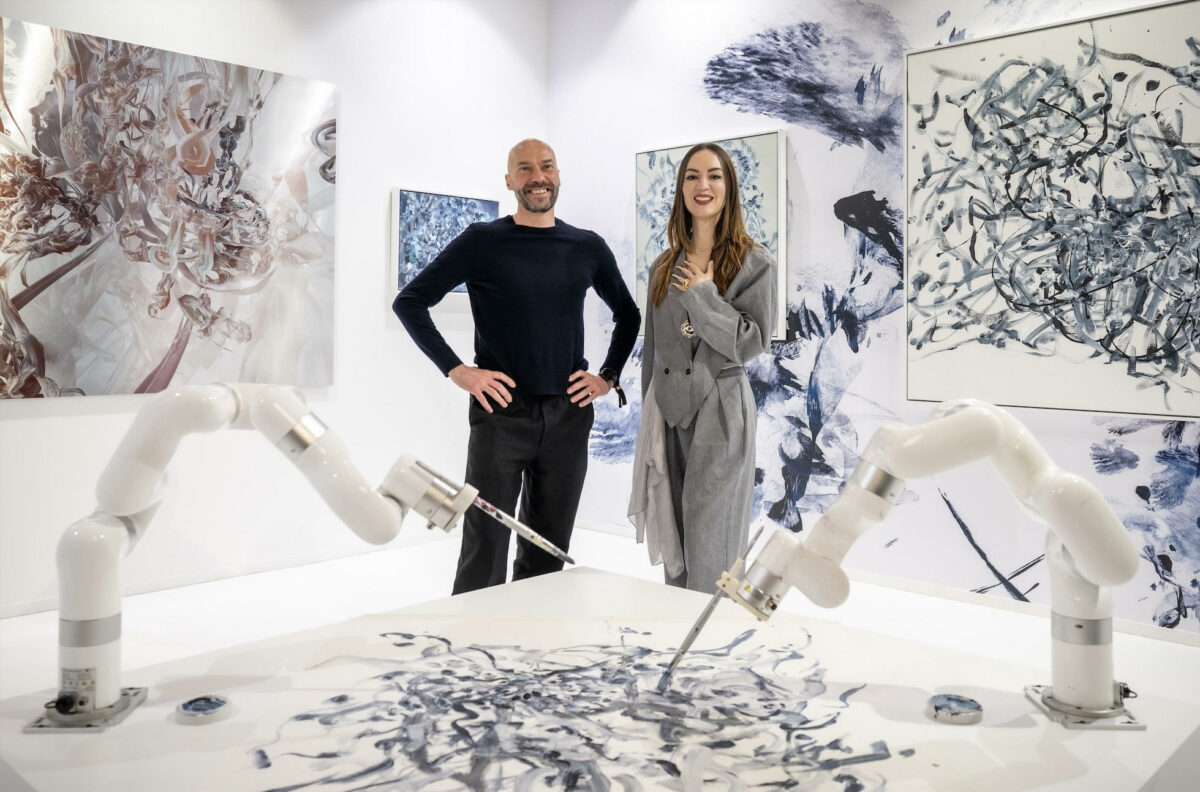
Auronda Scalera and Alfredo Cramerotti are a visionary curatorial team at the forefront of art and technology, moving seamlessly among the people transforming our world. Known for their forward-thinking approach, they collaborate with creators, artists, and writers to anticipate and communicate the trends and challenges that will shape our future. As curators of projects like Art Dubai Digital 2024 and the global exhibition ‘Web to Verse,’ they have redefined the intersection of contemporary art and digital innovation. Leading Multiplicity-Art in Digital, they champion diversity, inclusion, and technological integration within the art world. Their influence extends from jurying the Lumen Prize to shaping discourse on Web3 and the metaverse at prestigious events like the World Economic Forum and the UK Parliament. With a belief that art and technology are co-creators of the future, Scalera and Cramerotti are driving the evolution of digital art.
FAD magazine managed to grab some time with them to dig deeper into what they do, how they do it and their hopes and fears for the future.
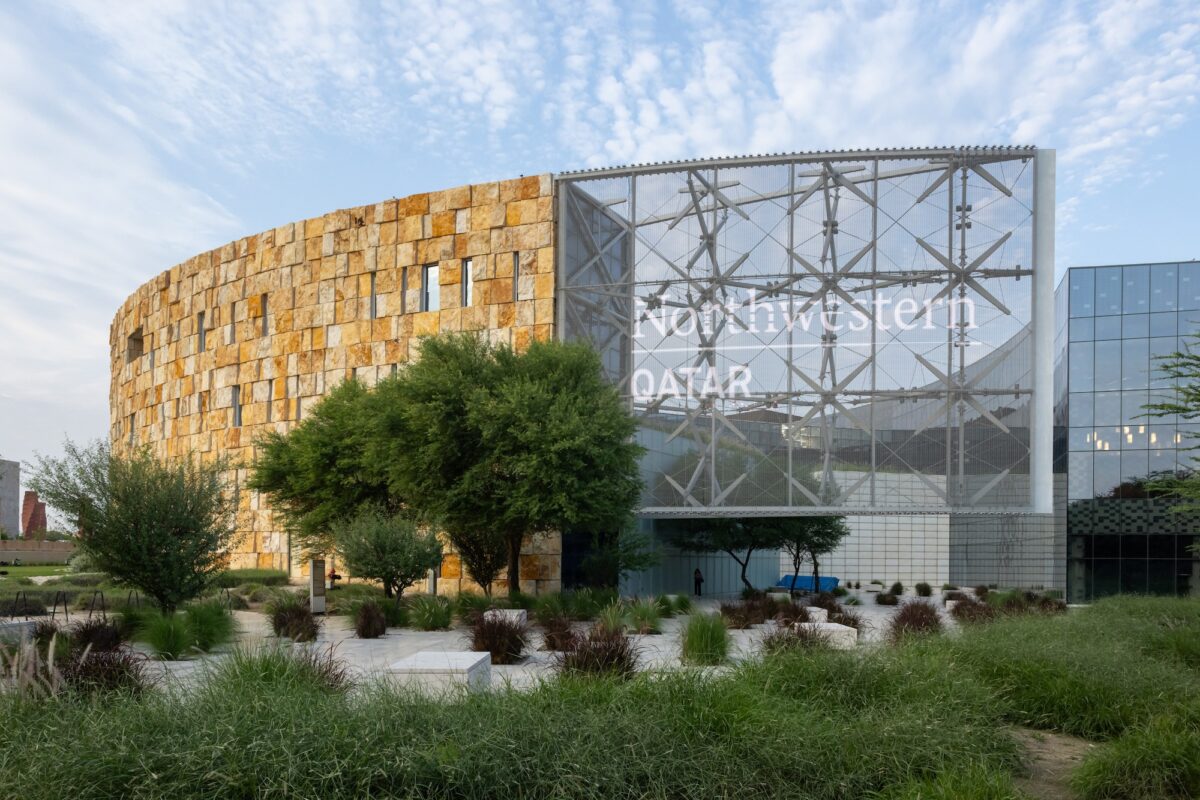
Space – physical/digital – how do you navigate – what is it? Where do you start? What do you have planned in Qatar? And exhibitions, how do you choose space for new artforms? Is a video screen on a wall enough?
Auronda Scalera: Navigating the physical and digital spaces requires a deep understanding of how each environment influences the viewer’s experience. We start by defining the core message and then explore how best to convey it within the chosen medium. In Qatar, we are excited to curate exhibitions that integrate digital installations with traditional spaces, creating immersive experiences. Alfredo (and his team) are doing precisely this as at mm:museum, for instance. For new art forms, a video screen on a wall can be impactful, but we often seek to go beyond, incorporating interactive elements and spatial design that fully engage the audience.
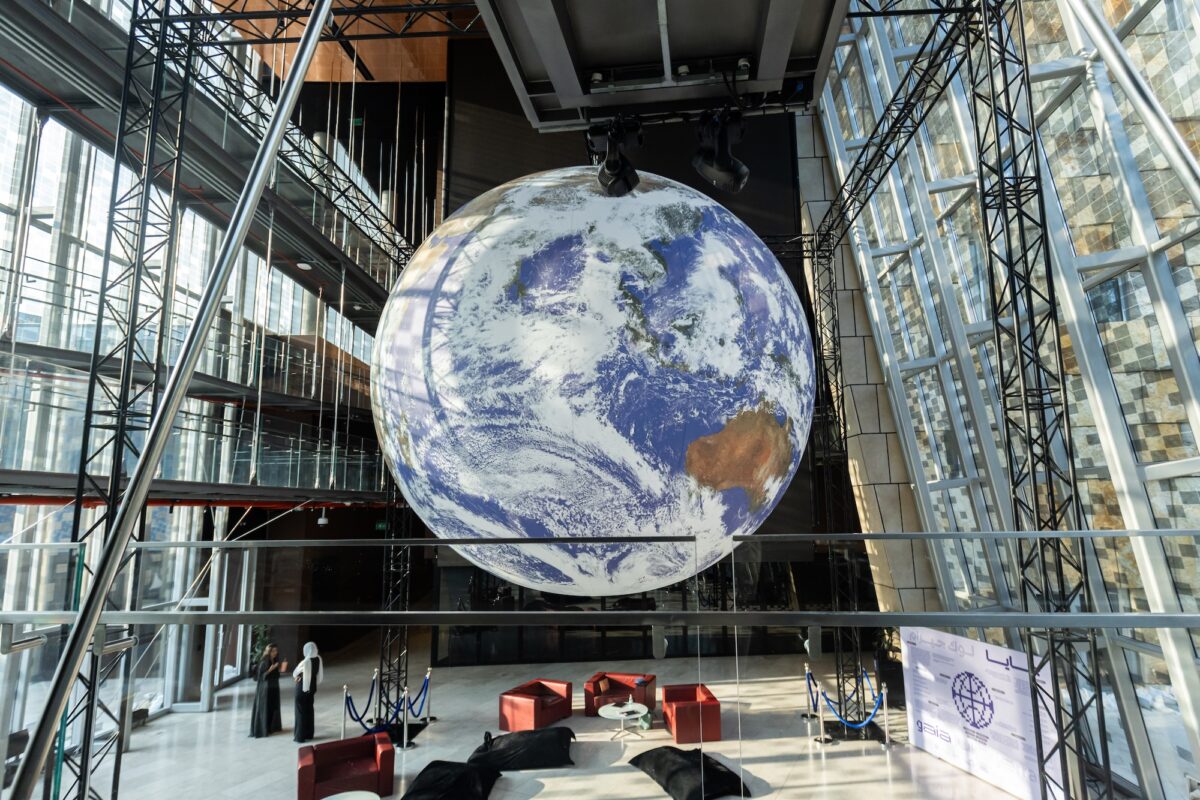
Alfredo Cramerotti: The blend of physical and digital is a fascinating territory. It’s about creating a seamless dialogue between these realms, as it is between contemporary art and digital art. In Qatar, where I am based, we are planning projects that leverage advanced digital technologies to enhance cultural narratives, and some of these stories may indeed be embedded in the traditional way of living. When selecting spaces for new art forms, we consider how the environment can amplify the artwork’s impact, how the artist’s work can be optimized for the audience. Often, we design multidimensional setups that transform the space and provide a richer sensory experience.
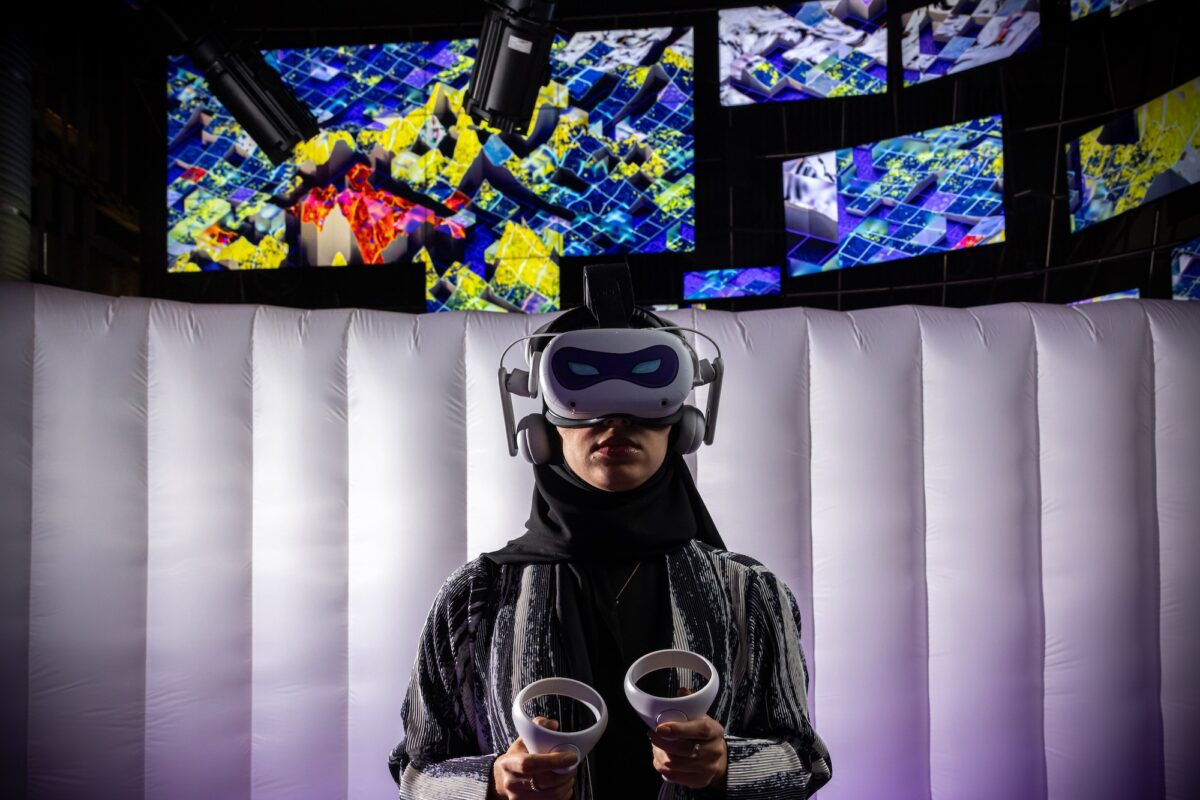
Curating – Curator – what do these words mean now? Many people think it just means choosing, organizing, and putting nice things together like a stylist or interior designer. But what does it mean to you? What do you do?
Auronda Scalera: Curating goes far beyond just selecting and organizing artworks. It’s about creating a cohesive narrative that resonates with the audience and prompts them to think, feel, and engage. We delve into the conceptual framework, contextualize the pieces, and ensure that each element contributes to a larger story. It’s an intellectual and emotional journey that we aim to craft meticulously. Plus we just released our new concept about “co-curation as co-creation” that takes this direction a bit further. We envision a future where the boundaries between artist and audience dissolve, fostering a participatory art experience that makes the audience an integral part of the artistic process. It’s like participatory art or Fluxus’ happenings on tech steroids, basically. This collaborative ethos enriches the art and empowers audiences, making them essential to the creation and evolution of the artwork.
Alfredo Cramerotti: In its current acceptation, the act of curating is a process of organizing knowledge in a certain order (which can also include a purposeful disorder). For me, curating is an act of awareness, mediation and translation. It involves deep research, understanding the artist’s intent, and bridging the gap between the artwork and the audience. Stepping into an audience’s position is actually a critical, fundamental point for intelligent curating – it’s not enough to organize knowledge, it’s very important to envision how that knowledge can be transferred, through what means and in which format and time. It’s about fostering a dialogue and creating spaces where, sometimes, none exists, and advancing ideas that can be equally exchanged and challenged. We aim to curate experiences that are thought-provoking and transformative.
A lot of new ideas seem to be based on old ideas. Have you seen anything recently that has truly taken your breath away?
Auronda Scalera: Yes, the cyclical nature of art means we often see new interpretations of old ideas. Recently, I was captivated by an installation that used augmented reality to bring historical artworks to life in a contemporary setting. It was a brilliant fusion of past and present, creating an entirely new experience that was both nostalgic and innovative. Another example of something very special was the exhibition that I saw during the Venice Art Biennale by the artist Josefa Ntjam, commissioned by LAS Foundation – a perfect example of what we were talking about in the previous question.
Alfredo Cramerotti: I was profoundly moved by a recent exhibition that combined AI-generated art with traditional painting techniques. The way the artists used technology to push the boundaries of traditional media was truly inspiring. It demonstrated how the integration of new tools can lead to unprecedented creative breakthroughs. It also reminded me of an exhibition I curated in 2014 called De/Coding the Apocalypse, by the artist Michael Takeo Magruder at King’s College Somerset House, London. It was an exhibition whose input was five readings by KC’s theological scholars of the Book of Revelations, translated into five interactive and immersive installations by the artist. Come to think about it, it was a decade ago!
Why do you do this?
Auronda Scalera: I am driven by a passion for art and a desire to explore its endless possibilities. Curating allows me to connect with diverse perspectives and share powerful narratives that can inspire and provoke thought. It’s incredibly rewarding to see audiences engage deeply with the work and leave with new insights.
Alfredo Cramerotti: My motivation comes from a curiosity about how art intersects with various aspects of life and society. I always had a foot in the art and a foot somewhere else, and curating provides a platform to explore these intersections and to facilitate conversations that can lead to meaningful change. It’s about creating and staging an alternative perspective on things.
What’s coming up? How do people keep up to date on what you are up to?
Auronda Scalera: We have several exciting projects on the horizon, including exhibitions in Saudi and collaborations with international artists exploring digital realms, and new iterations of Web to Verse a worldwide, ever-evolving exhibition curated together with Valentino Catricala’. We are working on three more WtV, in the Middle East, Asia and one on the Metaverse. To keep up with our activities, I recommend following our social media channels, especially Instagram, where we regularly share updates and insights. @aurondascalera
Alfredo Cramerotti: Indeed, we are working on a number of innovative projects that we’re eager to share. The Saudi major project is the next edition of Noor Riyadh, for which I work as lead co-curator, and Auronda as cultural consultant. Our website and social media profiles are the best ways to stay informed about our latest exhibitions, talks, and publications – I sometimes fall behind in updating it with the news but normally I’m in sync. We also engage with our audience through various art and technology conferences and events. @curatorview
What music are you listening to?
Auronda Scalera: Music is a fundamental part of our collaboration, we share a playlist called “Very good looking world” that somehow inspires our jobs and trips and ideas. I personally find always inspiration in a wide range of music, from classical to contemporary electronic. Lately, I’ve been listening to a lot of jazz and experimental music, which helps me think creatively and relax after intense work sessions.
Alfredo Cramerotti: Besides our VGLW communal endeavour, my other playlists are quite eclectic, reflecting my diverse interests. Currently, I’m enjoying a mix of jazz, ambient soundscapes, and some House, the more danceable one. Music is a constant companion that fuels creativity and provides a backdrop for personal life and work.
How do you relax?
Auronda Scalera: I enjoy spending time in nature, practicing mindfulness, and reading poetry. These activities help me disconnect from the fast pace of curatorial work and recharge my energy. Travelling and experiencing different cultures also provide a wonderful escape and inspiration but even meeting artists and get inspired by them for me is form of relaxation.
Alfredo Cramerotti: What do you mean relax? Kidding… Relaxation for me often involves swimming, a book, or cooking a nice meal. I also enjoy yoga, which helps me maintain balance and focus, but I admit I’m not so disciplined with it. Engaging with art outside of my professional sphere, such as visiting galleries, and museums or sharing a moment with other art passionates, also provides a sense of relaxation and joy.
Are you worried about the future?
Auronda Scalera: While there are certainly challenges ahead, I am always optimistic about the future. The art world is continuously evolving, and with it comes new opportunities for innovation and expression. I believe that through collaboration and creativity, we can navigate the uncertainties and build a vibrant future.
Alfredo Cramerotti: There are always concerns, especially regarding the rapid pace of technological change and its impact on society. However, I see these challenges as opportunities for growth and adaptation. The resilience and ingenuity of the art community give me hope that we can face future challenges head-on and continue to thrive.
FOLLOW: @aurondascalera / @curatorview
About
A cultural entrepreneur at the intersection of contemporary art, digital and mass media, Alfredo Cramerotti is an art curator, writer and cultural critic. He is known for his work in contemporary art and media, often exploring the intersections of art, technology, and society.
He is Director of mm:museum of art, media and technology [Media Majlis] ; co-curator, Art Dubai Digital, UAE; Senior Associate Consultant, Barker Langham, UAE; co-Director, IAM-Infinity Art Museum; Adviser to UK Government Art Collection, British Council Visual Arts Acquisition Committee, Italian Ministry of Culture, Art Institutions of 21st Century Foundation and Maxxi-Bvlgari Prize for international digital art.
Cramerotti has curated exhibitions, biennials and projects worldwide, including four national pavilions at the Venice Biennale (Wales and Maldives in 2013, Mauritius in 2015, Malaysia’s Pera Fauna Flora in 2022); the exhibition projects Web to Verse (2023-25) and Ideal-Types (2018-2019); Sean Scully’s at the Hong Kong Arts Centre (2018); Shezad Dawood at ISMAR/Fondazione Querini Stampalia in conjunction with the 57th Venice Biennale (2017); EXPO VIDEO Chicago (2015); and the biennials Sequences VII in Reykjavik, Iceland (2015) and Manifesta 8, Region of Murcia, Spain (2010).
He curated web-based projects, radio and television programs in the UK, Netherlands, Germany and Denmark, and is actively bridging legacy art practices with advanced technologies (AxAT) such as AI/Generative art, immersive art, VR/AR formats, crypto/NFTs, robotic and blockchain-based art.
He serves as President of IKT-Int’l Association Curators Contemporary Art; Chair of Digital Strategies Committee of AICA-Int’l Association Art Critics; Member of CIMAM-Int’l Committee Museums and Collections Modern Art, part of ICOM UK (International Council of Museums) and
He holds a PhD in Communication Design and Photography (2020) and has written extensively on contemporary art and media theory, with over 200 texts published in books, catalogues, monographs and journals. Cramerotti is Editor-in-Chief of the Critical Photography book series (Intellect Books), co-Founder of the publishing platform Multiplicity-Art in Digital focusing on diversity in the arts and society, and his own publications include the books The Transparent Layer (forth. 2024); Curating the Image: Notebook for a Visual Journey (2020); Forewords: Hyperimages and Hyperimaging (2018); Unmapping the City: Perspectives of Flatness (2010); and Aesthetic Journalism: How to Inform without Informing (2009).
Auronda Scalera is an art curator, lecturer, governmental cultural strategist, advisor, board member, global ambassador for art and culture and public figure featured in the NYC Journal as one of the Top 20 inspiring women in 2023 Cultural advisor for Noor Riyadh Festival, Curator for Art Dubai Digital, jury of the prestigious Lumen Prize x Sotheby’s and Bulgari Prize Digital Art nominator, Auronda plays a significant role in contemporary art and WEB3 Visiting lecturer for the IESA University and European Union Master in ‘Managing Art & Cultural Heritage in Global Markets’ CIMAM, IKT and UN women’ member.
Specialised in contemporary art and digital art with a thorough understanding of the global art market, she lives between London and Dubai, working as a curatorial duo with Alfredo Cramerotti, director of mm:museum of art, media and technology [Media Majlis] in Doha. She regularly participates – during the World Economic Forum- at talks and summits, speaking and advising for organisations such as the AI House in Davos.
She create exhibition and programmes with some of the most visionary artists, technologists and thinkers of her time. After completing her studies in contemporary art, technology, and philosophy with Giorgio Agamben, she embarked on a journey that would take her to work internationally and manage extensive exhibitions, cultural projects, and art fairs. She delivered an inspirational lecture-performance at the House of Beautiful Business conference in Lisbon in front of 700+ world leaders. She regularly appears on the art and technology conferences and summits.
The House of Lords wanted her as an expert witness on art, culture and new technologies at the UK Parliament, for a Commission on Web3 and the metaverse; SkyTV / ClassCNBC interviewed her among academics, artists and researchers on AI, art and museums; the PlusTate UK institutional network of museums invited her to organise webinars on art and new technologies; the latest World Economic Forum 2023 on Web3 and Metaverse for 100woman x Davos had her as discussant about equity and diversity.
Co-founder of Multiplicity-Art in Digital, a curatorial and publishing platform focused on Global Majority & technology where she uses her influential voice to empower artists. She regularly publishes articles on digital arts and recently she contributed to a special CryptoART monograph of Ellen Sheidlin by Rizzoli International. She co-found an impact art investment fund investing in the soft power capabilities of art & culture among various scenarios – political, economical, and social
